MLB Spring Training Ballparks


Maryvale Baseball Park opened on the west side of Phoenix in 1998, then reopened in 2019 as American Family Fields following a $60-plus million renovation that made it state of the art and combined the Major League facilities and Minor League facilities under one roof. Among the other improvements were wider concourses in the 7,000-seat main stadium, a practice field mimicking the dimensions of the Brewers’ home stadium in Milwaukee and a pathway from the parking lots that cuts past an agility field and the team’s weight room, affording fans a peek at players at work on game days.

Camelback Ranch in Glendale, Ariz. enters its 13th Spring Training as the shared facility for the defending World Series champion Dodgers and the White Sox. The picturesque venue has a seating capacity of 13,000, including 3,000 lawn seats across the left and right field berm, 12 luxury suites and a party deck. The stadium is located off Camelback Road and sits 3 miles from the Cardinals football stadium, the Gila River Arena for the Coyotes and the Westgate entertainment district all in Glendale. It’s also on the same road as the popular In-N-Out Burger. The facility gives fans a good chance to interact with players as they were walking in down the line to the field.
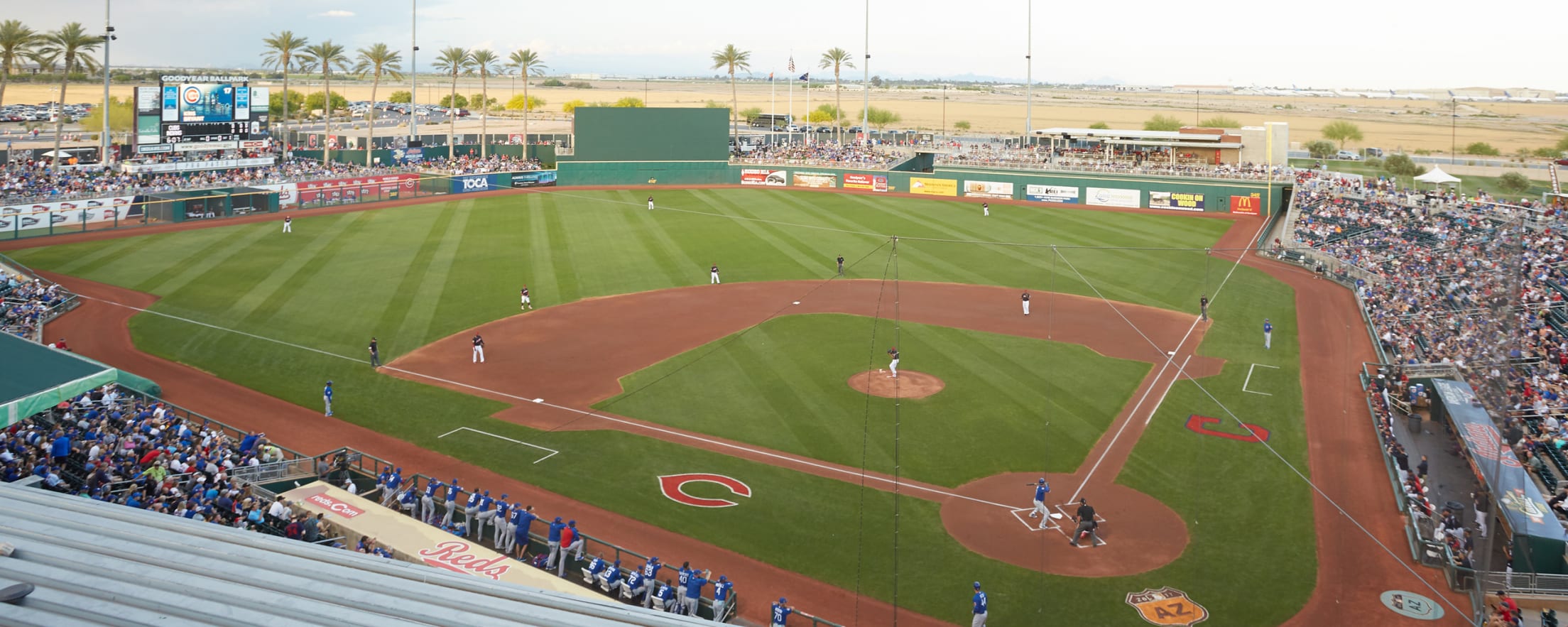
Opened in 2009 for Cleveland with Cincinnati’s arrival in 2010, Goodyear Ballpark serves as the Spring Training home for both Ohio clubs. Located 30 minutes west of downtown Phoenix, the stadium features approximately 8,000 permanent seats, space for about 1,500 fans on the outfield berm as well as additional club suites and party space seating. Both clubs have separate training facilities about a half-mile and one mile from the ballpark, respectively.
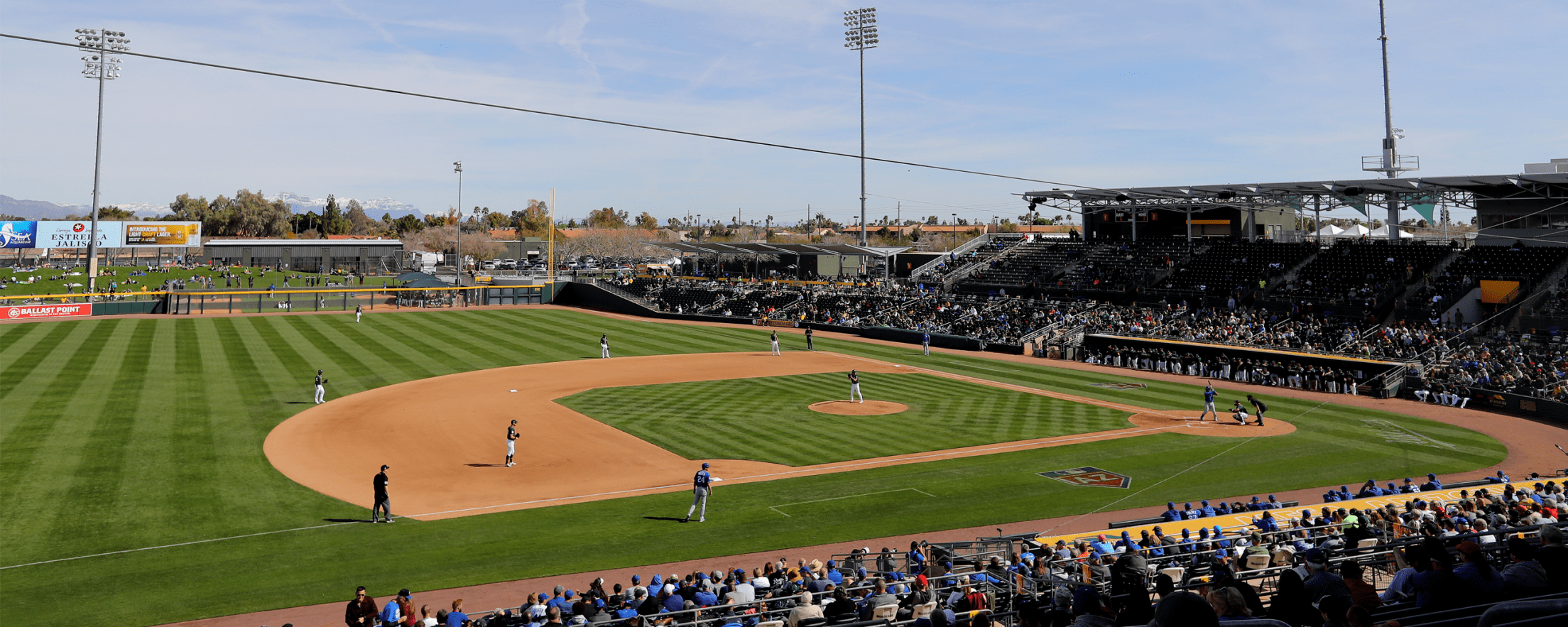
Opened in 1997, Hohokam Stadium in Mesa has served as the A’s Spring Training home since 2015, when the Cubs moved out of the stadium for a new ballpark just a few miles down. Hohokam underwent a major renovation just before the A’s first season there that included adding new fan decks, upgrading concession stands and installing what was the largest LED video board in the Cactus League at the time. The ballpark seats 10,500 and also features berm seating in the outfield, as well as backfields and batting cages behind the stadium. The A’s also utilize Fitch Park, which is just a few blocks down the road from Hohokam Stadium, as a training facility for both Major and Minor League players. That facility — which also serves as the year-round home of the A's Minor League training and player development operations — was also renovated in ‘15 to expand to 55,433 square feet and saw complete rebuilds of its batting cages, pitching mounds and four practice fields.

Opened in 1994, Peoria Sports Complex is the Padres and Mariners’ 12,339 capacity venue. Located amid Bell Road’s shopping district, the ballpark has a distinctly airy feel about it. It features an outfield berm in both left and right field and a tent down the left-field foul line, with numerous food stands along the first and third base lines. Peoria Sports Complex is located approximately half an hour from downtown Phoenix.
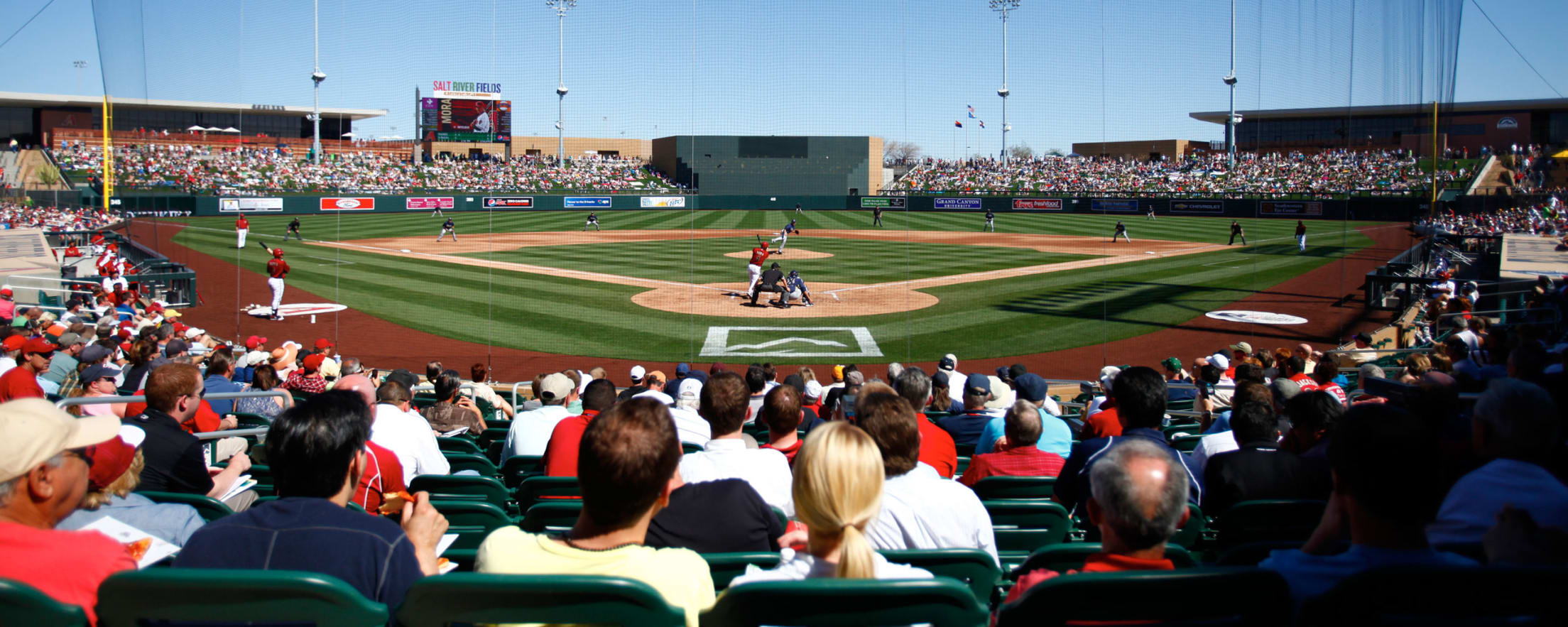
Home to both the D-backs and Rockies, Salt River Fields will celebrate its 10th anniversary this spring. Finished in 2011 in conjunction with the Salt River Pima-Maricopa Indian Community,, SRF was the first professional sports facility built on Indian land. With roughly 85 percent of the seating area shaded as games progress, it has become one of Spring Training’s most sought after tickets having led all of baseball in total spring attendance since 2011.
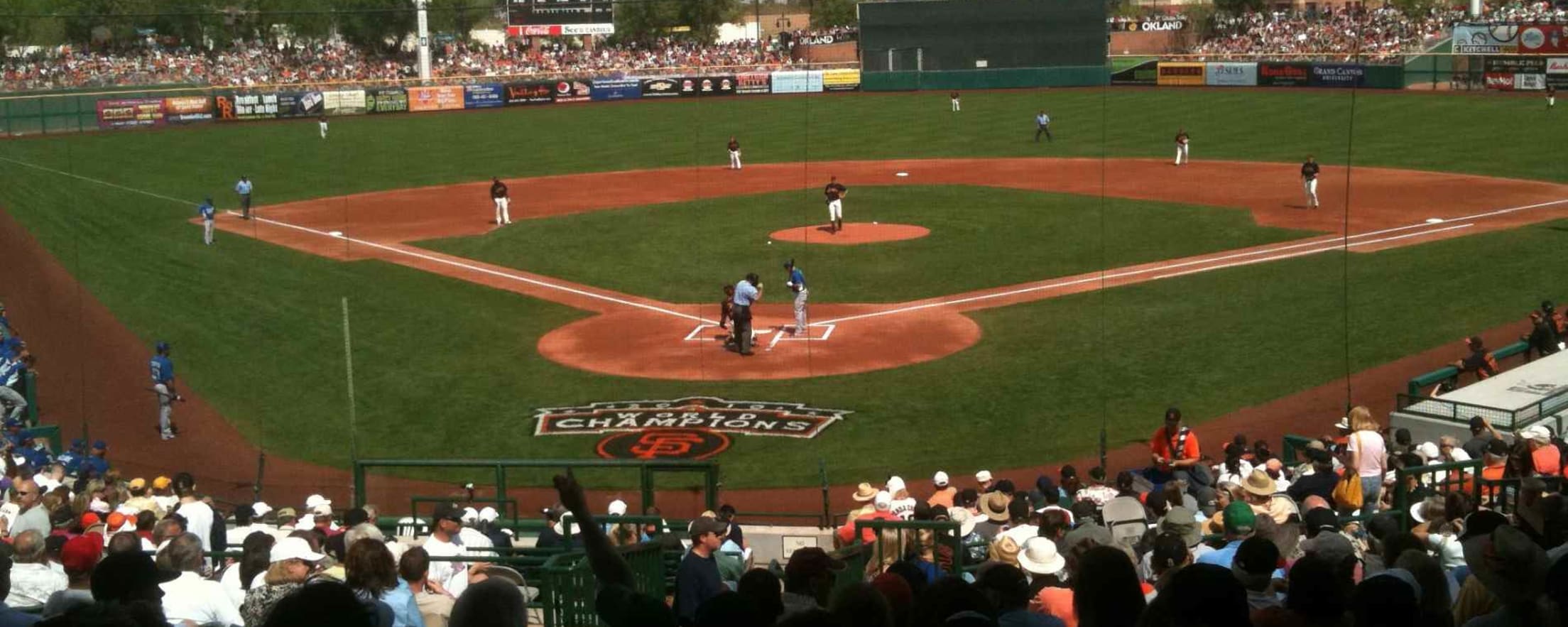
Opened in 1992, Scottsdale Stadium was designed by the architects of Camden Yards in Baltimore and features turn-of-the-century lamps, framed antique baseball gloves and sidewalk bricks in the shape of home plate. The Giants and the city of Scottsdale unveiled a $50 million upgrade to the facility in 2020, adding a 40,000-square-foot clubhouse, office space and a training complex. Located in the heart of Old Town Scottsdale, the 12,000-seat venue also hosts the Arizona Fall League's Scottsdale Scorpions and serves as a premier event space during the offseason.
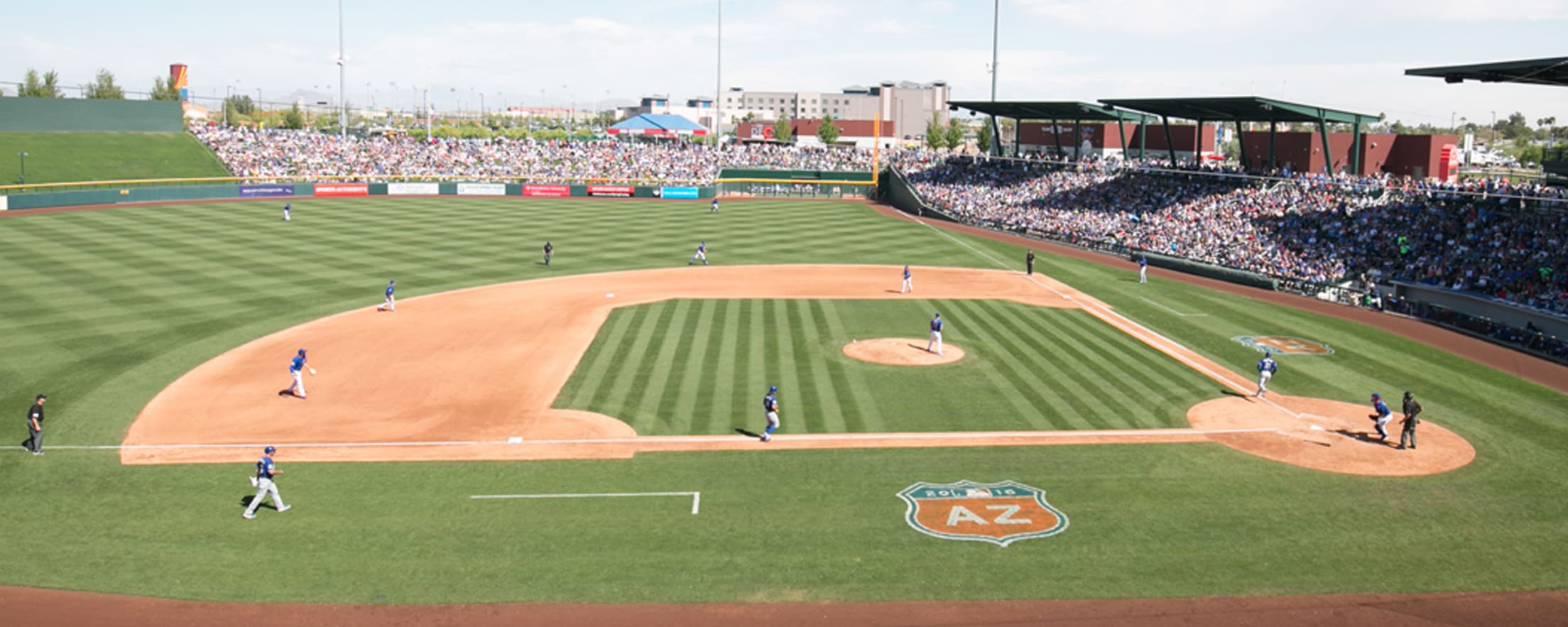
The Cubs have a long association with Mesa, Ariz., as their Spring Training home, but moved into the state-of-the-art Sloan Park in 2014. The ballpark seats 15,000 and the field has a similar shape as Wrigley Field, but with deeper dimensions. The Nike Performance Center is a short walk from the stadium and includes a 70,000 square foot home for the Major and Minor League operations. There are six practice diamonds and one half-field at the complex, which includes plenty of fan-friendly viewing areas. The Cubs have called Mesa home since 1979, and had a previous spring stretch in the west Phoenix suburb from 1952-65.
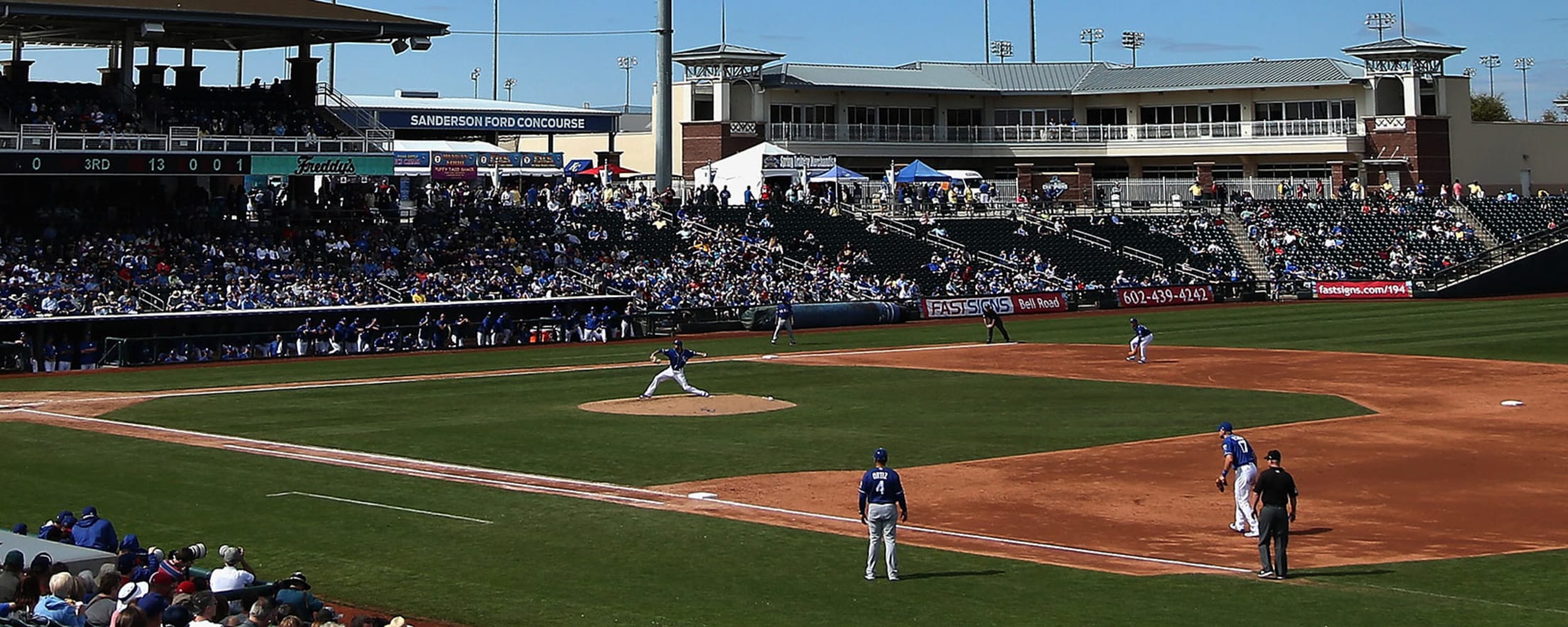
Surprise Stadium opened in 2002 and has been owned and managed by the City of Surprise Sports and Tourism Department ever since. The 10,500-seat venue features one sprawling outfield berm that spans the entire length of the stadium. It’s mostly one deck, save for a smaller, canopied second deck around the home-plate area. Surprise Stadium sits roughly 40 minutes from downtown Phoenix.

Tempe Diablo Stadium is located in Tempe and was built in 1968. The Angels have called the ballpark home since 1993 and oversaw extensive renovations in 2006. The Angels remain under contract to play at the stadium through 2025, but it could get extended, especially if more renovations are made to the ballpark. It's one of the most picturesque facilities in Arizona, as it features a view of a local natural rock formation in left field and is located at the base of Tempe's twin buttes. The ballpark features berm seating in left field and several concession stands featuring local restaurants in that area. It also has easy access to the 10 and 60 freeways and is only 10 minutes from Sky Harbor International Airport.


BayCare Ballpark opened in 2004 and is the home of Phillies Spring Training and the Low-A Southeast League Clearwater Threshers. The Phillies have been training in Clearwater, Florida, since 1947, the second-longest affiliation between a major league club and its spring training home in baseball. The Carpenter Complex, home to the Paul Owens Training Facility and the David P. Montgomery Baseball Performance Center, was built in 1967. The complex, used in spring training by Phillies major and minor league players, also hosts the Phillies Gulf Coast League affiliate and Florida Instructional League.

Since opening in 2009, Charlotte Sports Park has served as the state-of-the-art Spring Training home of the Rays. The facility includes four other playing fields, a half-field for infield drills, an outdoor batting cage and a special area named “The Lab” for pitchers to get extra work. The main stadium also has a kids area and upgraded concession stands.

The Mets recently completed a $57 million renovation of their Clover Park complex, which has had many names over the years but has been their spring home since 1988. In addition to the main stadium, the complex includes five other playing fields and several auxiliary training areas, as well as an on-site minor league facility. The area around the complex has grown immeasurably over the decades, with both a population and commercial boom following the Mets' arrival in Port St. Lucie.

CoolToday Park serves as the centerpiece of a state-of-the-art facility the Braves began using on a full-time basis in 2020. Workout efficiency is enhanced by the fact batting cages and bullpen mounds are located just outside the home clubhouse, which is just a short walk from the dorm and dining facilities created for the Minor Leaguers.

Built in 1989, Ed Smith Stadium in Sarasota served as the Spring Training homes for the White Sox (1989-’97) and Reds (‘98-’08) before the Orioles moved in permanently from Fort Lauderdale in 2010. The Orioles trained in the area previously, at Twin Lakes Park (current home of their spring minor league camp) and at Ed Smith for one lone spring in 1991. Four additional full-sized practice fields, batting cages and several auxiliary training areas about the complex’s main stadium, which holds 8,500 seats.

The Astros and Nationals moved into CACTI Park of the Palm Beaches in 2017, and each has won a World Series since. The 160-acre complex features a 7,700 capacity stadium that both teams share, along with six practice fields per team and separate clubhouses, batting cages, bullpen mounds and turf agility fields. Both teams have their logos displayed prominently out front, with each commemorating their World Series titles (Astros 2017, 2022 and Nationals 2019).
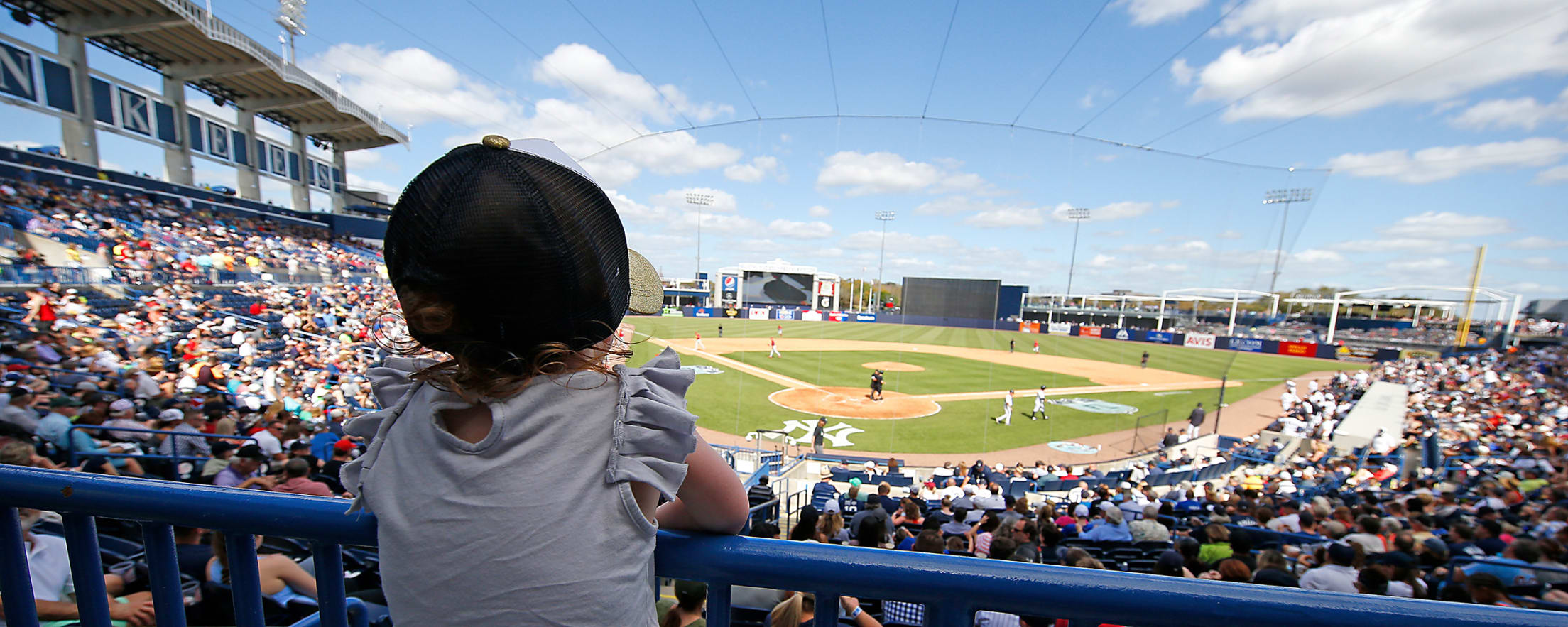
The Yankees recently celebrated their 25th anniversary at their spring home of George M. Steinbrenner Field, which opened in 1996 as Legends Field. The 11,026-seat facility replicates the dimensions of Yankee Stadium on its main diamond and features four practice fields as well as a covered bullpen and batting practice area. It is located adjacent to Raymond James Stadium, home of the NFL’s Tampa Bay Buccaneers. A $40 million renovation updated Steinbrenner Field in 2016, adding new seats, an expanded team store, a beachside bar and a 360-degree outfield concourse.
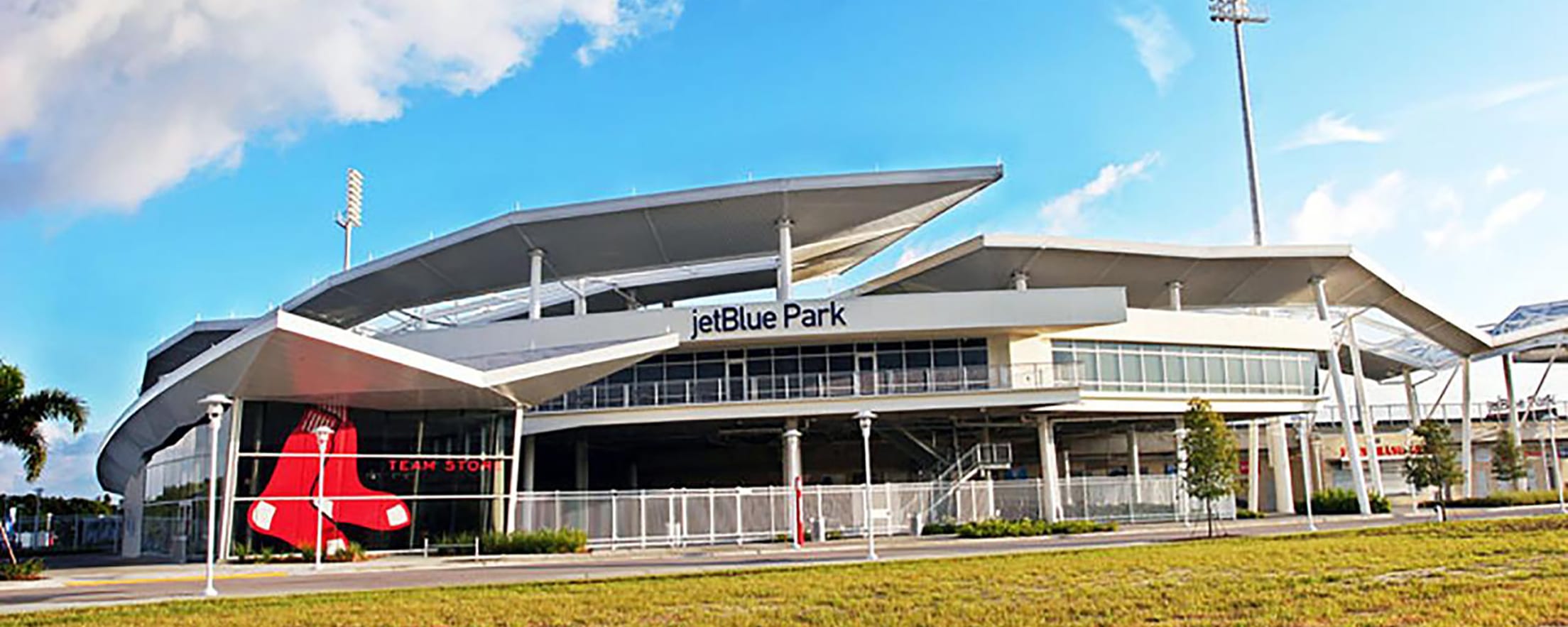
While the Red Sox have been training in Fort Myers since 1993, they moved into state-of-the-art JetBlue Park in 2012. The dimensions of the park replicate Fenway Park, including a Green Monster. But the venue has a decidedly Florida feel, with palm trees and picnic areas. The spacious complex also includes six full-size practice fields.
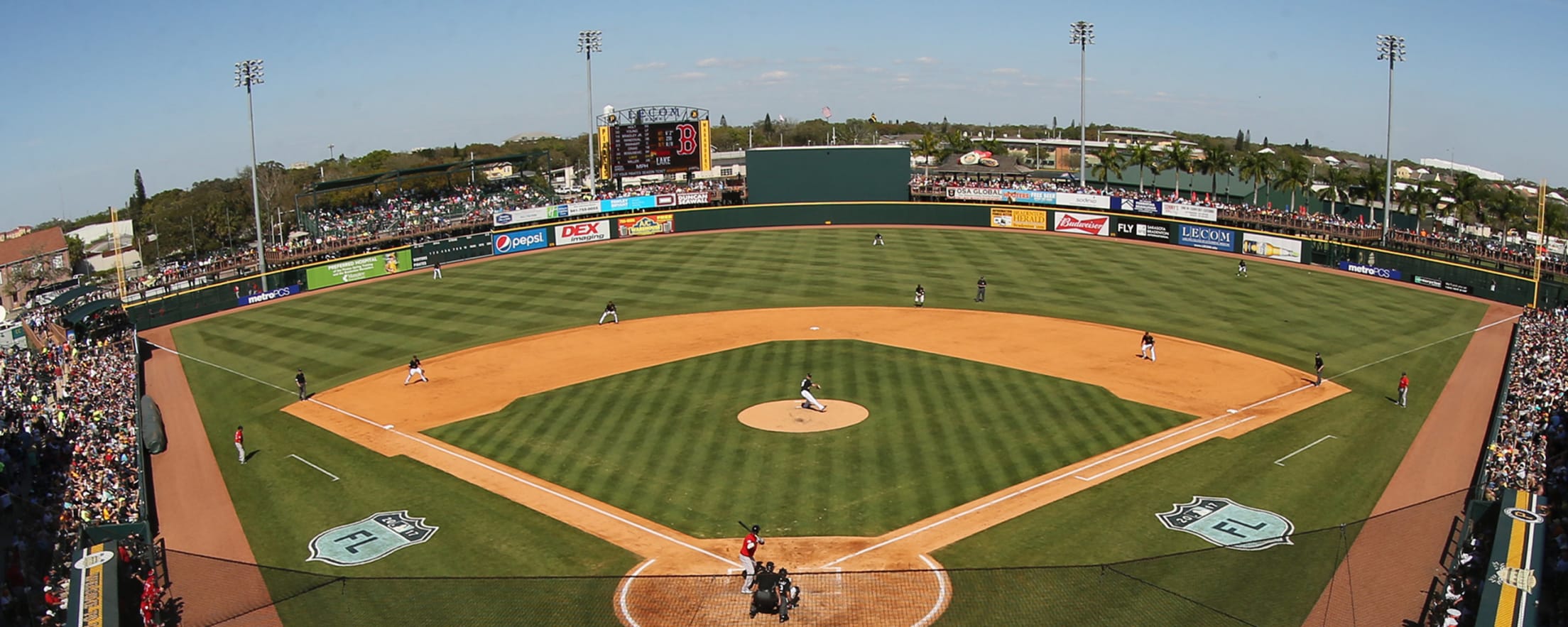
The club begins Spring Training across town at the Pirate City complex, also home to their Rookie-level Gulf Coast League team, before moving to the ballpark formerly known as McKechnie Field for Grapefruit League games. LECOM Park was built in 1923 and has served as the Pirates’ Spring Training home since 1969. It maintains the feel of a classic ballpark, with its Spanish mission-style facade and nine decades of baseball history, but it has been significantly upgraded in recent years for Spring Training and the club’s Class A Bradenton affiliate. LECOM Park can accommodate more than 7,500 fans, with standing room bringing the capacity to 9,000 people. The biggest round of renovations, headlined by a 19,000-square-foot boardwalk spanning the outfield, took place in 2013.

The Twins first held their Spring Training at the Lee Health Sports Complex in 1991, and the sprawling facility has served as the hub of their Minor League operations ever since. The site is home to the 9,300-seat Hammond Stadium, five additional full-sized fields, an infield, four softball fields, the Twins’ player development academy and dorms for international prospects and also hosts two Minor League affiliates. The facility was most recently renovated in 2015.
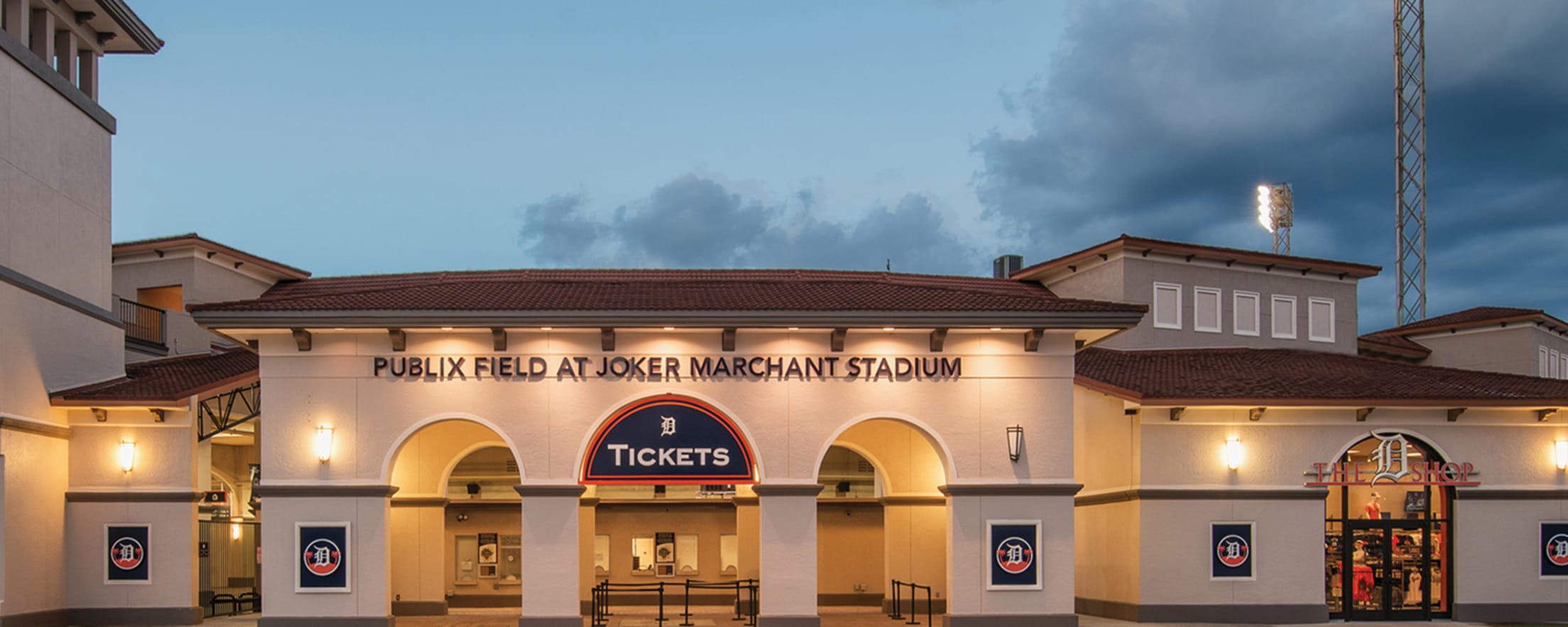
The Tigers have trained in Lakeland since 1946, the longest ongoing relationship between a Major League team and its Spring Training home. They've played their Spring Training games at Publix Field at Joker Marchant Stadium since 1966, when the city converted an old World War II air training base into a baseball complex and stadium. Some of the old airplane hangars are still standing. The stadium has a seating capacity of 9,568 after its 2017 renovation that also brought an outfield concourse and party area for fans, updated clubhouses, training room and workout fields for players, and new executive offices. It’s a place that exudes history yet still has modern amenities.

Opened in 1998, Roger Dean Chevrolet Stadium was specifically designed to house two Major League teams, as the Cardinals share the facility with the Marlins. The Cardinals moved to Jupiter from St. Petersburg, Fla., where they held Spring Training for 57 years. Attracting them to Palm Beach County was the state-of-the-art facility nestled within the Abacoa community of Jupiter. The ballpark seats approximately 6,800 fans and features backfields behind the stadium, with the Cardinals beyond right field and the Marlins beyond left. With five teams -- Cardinals, Marlins, Mets (Port St. Lucie) and Astros and Nationals (West Palm Beach) -- inside a 50-minute drive, Roger Dean has a packed schedule throughout the spring, and fans don’t have to go far to catch a game.
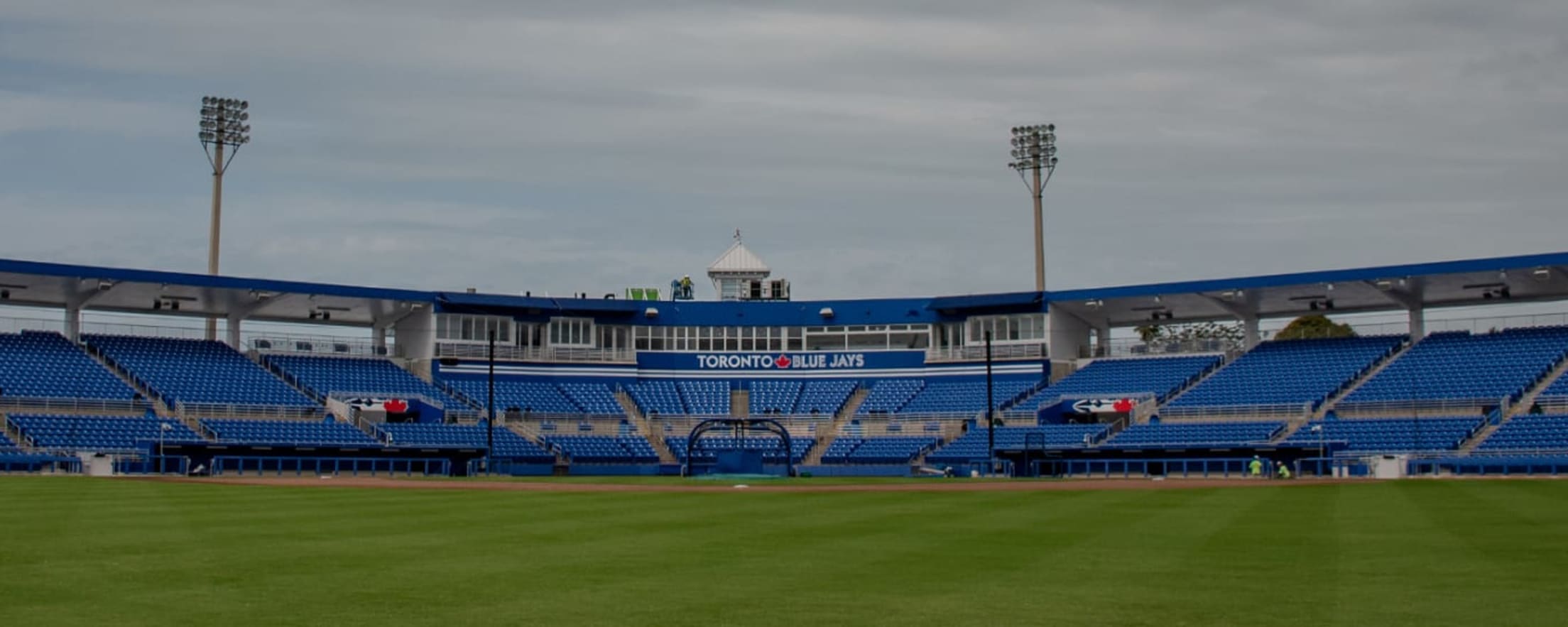
TD Ballpark has a long history in Dunedin, originally opening as Dunedin Stadium at Grant Field in 1930. It's been the Blue Jays' Spring Training home since their first season in 1977, going through several name changes over the years. After fully renovating TD Ballpark in 2020, which now seats 8,500, the Blue Jays overhauled their Player Development Complex, making significant upgrades to those facilities which are three miles away from the stadium, across Dunedin. TD Ballpark spends the summers as home to the Blue Jays' single-A affiliate and hosted the Major League club as their makeshift "home" stadium during the COVID-19 pandemic in 2021.